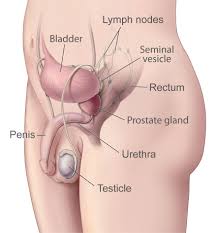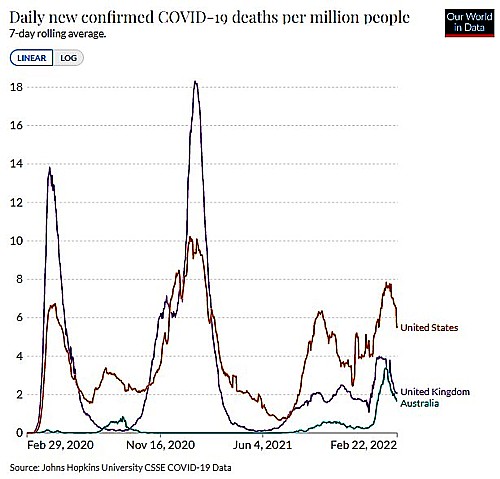The Pandemic
A year ago I commented on the COVID-19 pandemic and promised an update. So, here it is.
| COVID-19 update (end February 2022)
COVID-19 restrictions are now being eased, in order to restore normal economic activity. Theatres, pubs, concerts, and schools are now free of social distancing limits and within days face-masks will also be optional. For a period, after that reported above, the virus spread to western Sydney causing extensive lock-downs. After a slow start, double vaccination rates soon exceeded 90% of the eligible population in our State and now many children are also vaccinated and about half the population has received a booster. Australia's borders have been quarantined and international travel curtailed but in June 2021 we were able to travel to Central Australia (see elsewhere on this website) and despite repeated outbreaks the principal impact at the height of the pandemic was the closure of many entertainment venues; the requirement, for many, to work-from-home and the, somewhat arduous, home-schooling of children. During 2021 I attended different hospitals on several occasions and on none of these seemed unusually overwhelmed by COVID-19 patients. Elective surgery, that was interrupted for a period, is now restored, for example: for a friend who has recently undergone a hip replacement. When the infection rate was low QR codes at all retailers and other venues enabled comprehensive contact-tracing. But a new more infectious variant (omicron) soon overwhelmed the tracing teams and has spread widely. Mainly thanks to vaccination, COVID-19 is no longer particularly deadly and Australian governments have followed the world trend towards accepting a small rise in deathrate as herd-immunity is achieved.
The continued higher daily death rates per million in the US and UK are due to wider spread of the virus, as a result of earlier mismanagement, and to lower rates of vaccination due to the activities of anti-vaxxers. Thanks to intergovernmental cooperation and coordination, total Australian COVID-19 deaths, since the start of the pandemic, have been very low by international standards (just over five thousand have died to date). Again thanks to ongoing vaccination (boosters), the daily rate is now declining, in spite of reduced restrictions (now a 7 day average of 43 per day, down from a peak of 86, Australia wide). About half these deaths are among the unvaccinated or partially vaccinated. Deaths in Australia, from all causes, prior to the pandemic, averaged about 450 a day (164,000 pa). Many of these were in the same (at risk and elderly) cohort of people who are now being killed by, or are dying with, the virus. Thus, so far, the virus has had very little impact on the overall Australian deathrate. The main impacts have been economic and social. In the absence of another more deadly variant, it appears that many countries, including Australia, are now approaching herd-immunity, enabling Australia to remove travel restrictions (quarantine) and open-up once more.
|


